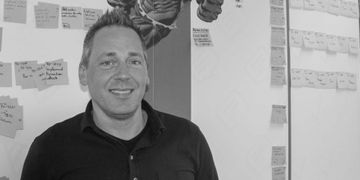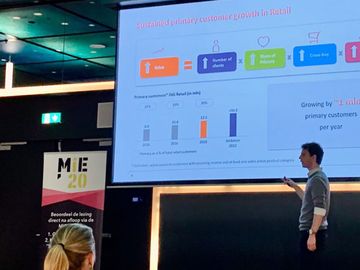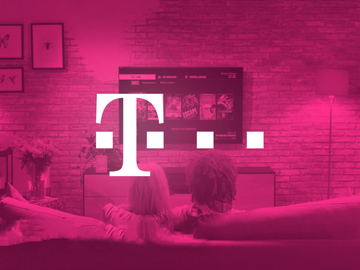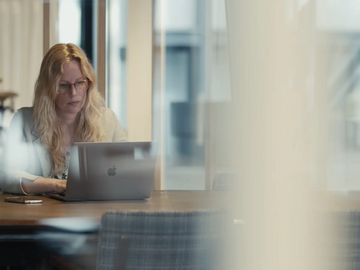
Maarten Goedvolk (Telfort): “Optimizing is an always on process”
Telfort is the winner of the most recent WUA! service study in the Dutch telecom sector (in Dutch). Telfort scores best in 3 out of the 6 service tasks. Maarten Goedvolk is Scrum Manager at Telfort. In this interview, we talk about being the best, excellent customer service, optimal response selfservice environments and continuous delivery.
Congratulations, Maarten Goedvolk. You are the winner of this WUA! WSS study on service in the telecom sector (in Dutch), and you’ve beaten the direct competition with Telfort. How important is it for you to be the best?
Maarten Goedvolk: “I think it’s very important. We have done so well that we’re better than the rest, as this WUA!-study shows. For me it is really a confirmation that we are successful in the areas that we have considered important. That motivates to hold on to the effort and passion that we put into it. And, it is a recognition for the people who have done it, because I didn’t do it by myself. It is a collaboration, a team effort across multiple departments! Now our motto is: retain and continue.”
You scored highest on 3 of the 6 service tasks. Can you elaborate on Telfort’s tactics and digital approach: which indicators for success can you address?
Goedvolk: “Looking back, we at Telfort worked very hard to get into the driver’s seat for online ourselves. We have taken really huge steps to create an environment where self-care and self-provisioning can be done by visitors to our site in the most optimal way.
“Our philosophy is: we want our customers to be able to formulate a question in no more than 5 steps, and we want them to be able to receive the correct answer in just one single page. In the past, there was a lot of content that did not provide the answers people were looking for. We rewrote all service content, being very strict to ourselves, asking: is this answer really a solution? We offer the best solution instead of a whole list of answers with the text: ‘Perhaps this is the answer to your question.’
“Optimizing for us is an always on process. We still have a certain percentage of customers who press the call button, because they do not find what they seek. I want to know why this happens, and how we can improve it. But we also know that there is a limit to understanding and optimizing the presentation of the correct answer in a service environment.
“Because: some solutions just cannot be found in the presentation of an answer, but they can be found IN the product instead. To give an example: in the past we were quite often asked how to empty a mailbox, because it was full and consumers couldn’t receive mail anymore. You can then bend over backwards or you can make sure that consumers’ mailboxes become much larger so the problem is solved immediately and will simply stop to exist. We continually look at things like this as well.”
What is the role of customer research and customer focus in your daily work?
“We build the site and the improvements based on what we see in the usage data, and for any new stuff we build, we do research. We test the usability whilst we are building, and when we go live, we monitor closely at target level. Every day and every week we look at the data. We also look back every month: every first Wednesday of the month we carry out a survey with a number of clients and one or two colleagues. We put the learnings from this research on a large Trello-board. On Fridays, content managers and developers are ready to pick up low-hanging fruit. And then it’s ready on Monday! If there are still big things that are unresolved, they are picked up by the product owner online in the backlog. This approach provides a lot of potential to do better, so we’re improving at the same time!
“We measure on both mobile and desktop: do people still click on the contact button to get the phone number for the service desk? And from what response environment? These environments are then analysed: which 10 are least performing? We then deal with those and try to solve it with the scrum-method: every two weeks we tackle the 10 worst environments. Then we test, redesign, check the text, the pictures and the roadmap.
“I’m proud to say that of all customers who enter the Telfort service environment, 9 out of 10 do not click on the contact button. It’s almost 9.5 actually… 🙂 I have been working at Telfort for a while: at one point it was 3 out of 10. This shows that we’re getting better at guiding people towards the right answer. But: there is always room for improvement!”
What is your biggest digital challenge?
“In a more general sense: trying to build the most online value for Telfort in a transparent way. Which things do we need to tackle in order to improve, and what digital sections should we leave as they are? This is actually a matter of ‘ultimate backlog management’, because this holds the key to what we tackle and what we improve.
“Also generating good ideas is a challenge, I think. That may sound a bit odd, because ideas usually aren’t the issue. Focusing on doing the right things, that is the biggest challenge of all. Online is a very fast-paced world, but there are certain things that you should allow a little extra time for…”
How do you look at service in relation to sales? Could service eventually become the new sales in the telecom sector?
“There is actually only a very small difference between sales and service. Both focus areas need to connect. In sales, you have an aftersales phase which is aimed at service. And during the purchase phase you have to deal with the fact that people want to know if they will receive good service if they decide to purchase a service or product. These things… really go hand in hand. But, because you work in different teams, which are responsible for parts of the site, you have to really make sure that you do not grow apart as an organization…
“In a hierarchical sense, sales is not my responsibility, but I did make sure that the sales teams pay us regular visits. Last week we created the new Telfort vision together with the salesteams, we sit together one-on-one, and we come up with a good story that is brought to the organization on behalf of sales AND service. We told all employees the same story, from two different departments. If you want to create a good website, you can’t do it separately!”
Are there any cool things in the making at Telfort, what digital innovations are you working on?
“On January 12th we launched a new website, which is now fully responsive. All the design work we have done has been designed with an optimal mobile experience in mind. We are working on continuous delivery, that changes the playing field for us. This allows us to operate in a very short cycle. We now arranged the infrastructure in such a way that we can also push content to the app from the Mijn Telfort environment. Then we just need to release, rather than develop again. This app went live during the first quarter of 2016 by the way!
“Furthermore, we are working hard to make the Mijn Telfort environment fully responsive with a customized design. Next steps for service are working out how we can achieve a greater interdependence between the customer forum and the questions. We have a fairly active forum, the customer-helps-customer rate there is really very high. We want to show validated answers from the forum in the service environment, in addition to the guided search answers. Then you could, for example, compare failure information to the latest answers from the forum. That is hugely enriching!”
Read More
For more interviews with top of the bill digital professionals, check out this section on WUAGlobal.com. This summer, we’ve interviewed Daniel Bäumer, head of digital at Vodafone Germany. Read the interview here in English, or here in German.


